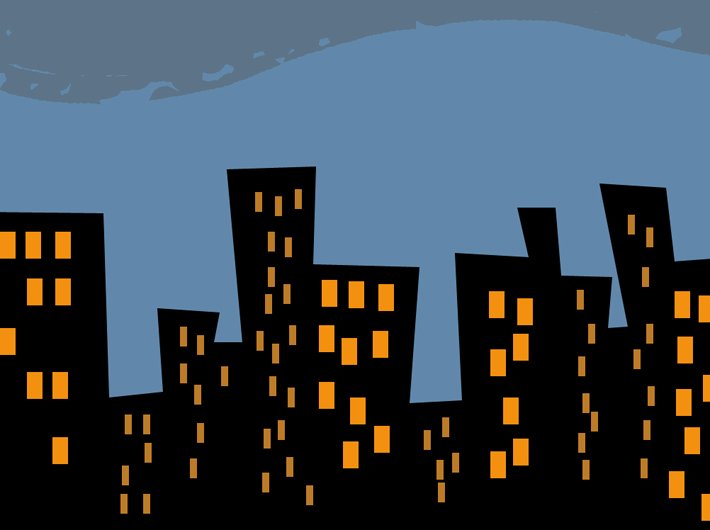The guideline document on housing for all in urban areas is silent on “no evictions without resettlement”. This means in many cities evictions without resettlements can take place
The Pradhan Mantri Awas Yojana (PMAY), introduced in June 2015, aims at providing every family with “a pucca house with water connection, toilet facilities, 24x7 electricity supply” by the time the nation completes 75 years of its Independence in 2022.
The Yojana rests on four main verticals:
• In-situ slum redevelopment for slum dwellers , with ‘land’ as the vital resource, and with private participation
• Credit linked subsidy intervention for EWS (yearly income upto 3 lakhs) and LIG families (upto 6 lakh income)
• Subsidy for individual construction or incremental housing
• Affordable Housing in partnership with private sector
The PMAY is one amongst the many schemes and policies proposed by the government for the SDG Goal 11 which aims at making cities sustainable and inclusive. Hence this scheme has national as well as global implications and promises to address an anticipated housing shortage of 20 million by 2022 in urban India. It has already been officially announced that a majority of the programme is going to be financially supported by public-private partnership through leveraging land and other resources in the cities.
With a promised investment of Rs 97 crore across 21 states, the amount released for construction so far is 8 crores (as on May 2017). The physical progress has been quite slow, with total houses completed till May 2017 just 99,000. A dismal picture is the occupancy of houses which is only 6% of the total houses completed. If the government is expected to build 20 million houses in the next 8 years, then it has to approximately build 2.5 million houses each year. Right now, the progress has been disturbingly unsatisfactory. The states that have comparatively progressed well are Madhya Pradesh, Tamil Nadu, Gujarat, and the states not doing so well are Chhattisgarh, Uttar Pradesh, Kerala etc. One of the major reasons cited by the government for this slow progress is lack of availability of urban land for building the houses.
What the PMAY misses out
• Though the PMAY talks about ‘Housing for ALL’ in urban areas, the guideline document is grossly silent on stating “no evictions without resettlement”. This obviously means that in many cities evictions without resettlements can take place in the disguise of implementing PMAY.
• Decisions on eligibility of the slum dwellers, cut-off date, and beneficiary contribution to slum redevelopment projects – all are to be decided by the state.
• The PMAY does not talk about ownership of housing/land rights. Ownership rights – whether renewable, inheritance etc will be solely decided by the states/UTs. The government is free to impose suitable restrictions on transfer of houses constructed under this component.
• This scheme does not address the right to housing from a feminist perspective. It just makes a hasty mention that houses which will be constructed with the help of central assistance, can be in the name of women or joint ownership. Almost 30% of the urban poor are single women, or women with children, etc and it is the duty of the State to provide housing for this vulnerable section.
• The most used phrase in the guideline document is ‘private participation’ / ‘private partnership’. To execute the major two verticals – In-Situ Slum redevelopment projects and Affordable Housing projects, the government depends to a great extent on private partnership i.e. corporates, private real estate developers. Most often it has been seen that the private sector fails to reach out to the needs of the beneficiaries.
What it should have included
• Housing for All should not be looked only as the mere provision of a dwelling unit but in terms of ‘dignified habitat’. It means i.e. housing along with civic amenities and services such as water, electricity, sanitation, all that is required for a life with dignity.
• People migrate to the cities for work and livelihood, and not only for housing. There is a floating mass of population who migrate between the city and village, and most often are either homeless or are slum dwellers. Hence the need for housing should not be seen in isolation with livelihood. For such working population, one can think of operationalising workers’ hostels, tenurial housing societies etc.
• The urban population is a heterogeneous mix of people with diverse needs and aspirations. Hence, appropriate housing solutions need to be designed to cater to a wide section of citizens viz. working class, old and destitute, mentally and physically challenged persons, women with children, single women etc. While one can think of homeless shelters as an immediate solution; the State needs to be proactive for designing suitable housing provisions for the marginalised.
• People’s participation and their consent at every stage of planning is a non-negotiable.
• ‘Housing’ rather than becoming a basic human right for people, has become an investor-friendly, market driven commodity. Private developers are more in favour of building multi-storeyed housing, which systematically fail to cater to the needs of the poor in the long run. Multi-storeyed housing ventures have failed in terms of sustainability, proper functioning and leave no scope for incremental housing.
• Reservation of housing for the socially marginalised sections in the cities. The PMAY is totally silent on the question of social housing for the minorities, dalits etc.
(Chatterjee works with the Citizen Rights Collective (CiRiC) -- a knowledge activist initiative of ActionAid India)


